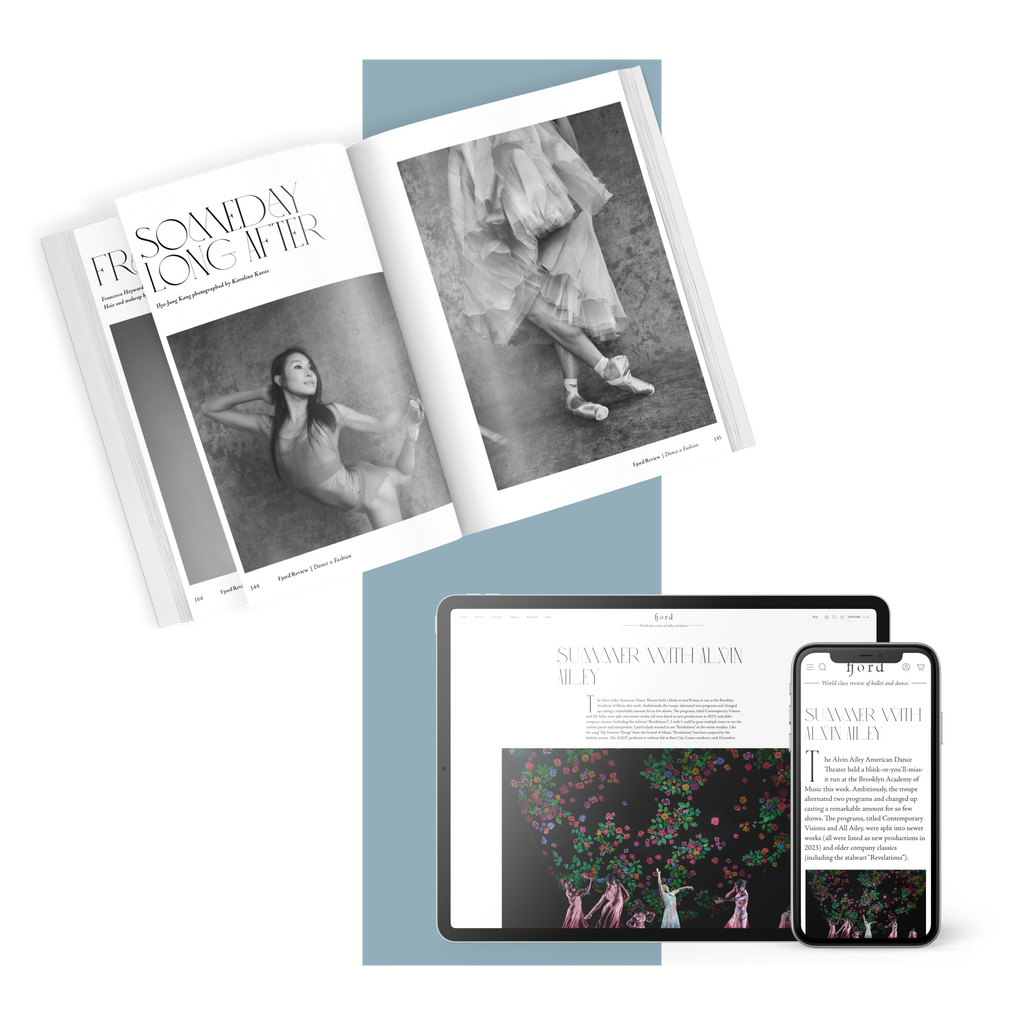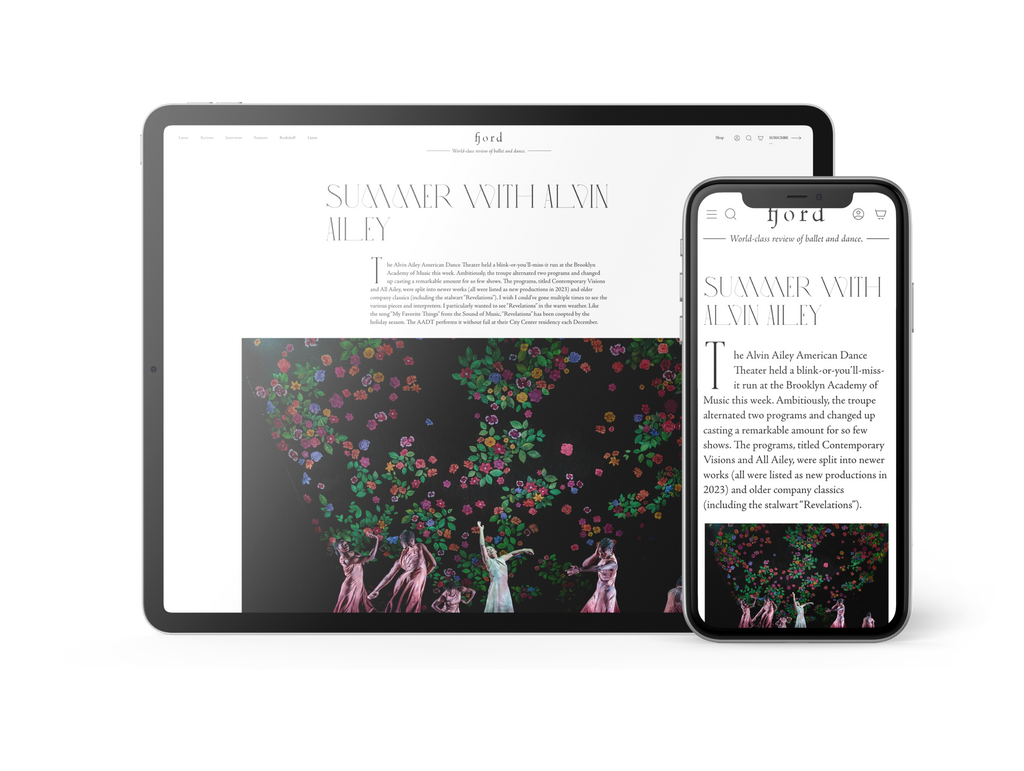For an example of the traditional side of Alston, “Voices and Light Footsteps” shows a definite mellowing in this later work. There are ten permutations to the piece, with solos, duets and company work acting like a kind of dance haiku: one dancer, then seven, ten, one, and so on. (Okay, this isn't strictly a haiku, but not far off it!) with the order of dancers' movements constantly mutating as it develops. Its courtly leanings are offset with flicked wrists, half-genuflections and all of the rigid baroque gestures emulating the ballrooms of Marie Antoinette. Solos are like calligraphy drawn into the air, groupwork is stately and sensual, and it feels technically stunning, but not so easy to warm to.
Another piece fitting in this mode is the elegant “Blue Schubert Fragments,” based upon an early seventies piece. All classical vocabulary is there- a spirited cabriole or arabesque- but what is remarkable is how the dancers seem like chess pieces moving across a board, in simple white vests and black trousers by Inca Jaakson. A grand jeté is never what it seems here, a mere jumping-off point for more malleable steps. Yet, it's still not among the best work of Alston's.
More satisfying by far are excerpts from “Nowhere Slowly” with featherlight lifts, glides and bodies which seem to float to Terry Riley's dreamy saxophone-laced music. Although it's an earlier piece (from 1970) it feels absolutely timeless. The liquid pas de deux featuring the wonderful Monique Jonas and Nahum Mclean is ridiculously sexy- they seem to melt into one body at certain points.
“Mazur” is a genre splicing, fleet of foot moment, with a Hollywood era swing to even its most classical lines, and a Puckish, fraternal lightness from the superb Joshua Harriette and Nicholas Shikkis, “bros” in all but name. Their turns and bounces emulate Astaire in the mood of jolly insouciance, and they respond to the live piano from Jason Ridgway with an almost improvisational freshness that belies the dexterity of their footwork. Their bows are to each other, Ridgway, and to the audience, but seem like a bow to the freeing nature of the piece itself- and to Alston for creating it.
The best two works of the evening, and most challenging by far, for my tastes, are “Red Run” and “Isthmus.” Both are newer pieces. The former feels like a constant disruption of mathematical precision, always playing with the form. There is symmetry, and then dancers just so happen to fall into splits, or tangle limbs, stamp feet with tantrum energy, but then collapse like exhausted children. It's immensely playful.
The latter, to Jo Kondo's absolutely bonkers soundtrack of the same name, emulates the wild bursts of brass, and clanking percussion alike, with the four dancers—Joshua Harriette, Jennifer Hayes, Nahum Mclean and Ellen Yilma—playing a game of kiss-chase, wound-up and leaping like clockwork toys.
On the strength of this, the company are at the peak of their powers, as liberated and powerful as ever. They make it all look so effortless. Alston's work has one foot in the past, and one in the future.
We haven't heard the last of them.









comments